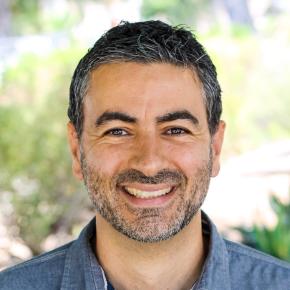When Joshua Alcorn turned 14, he told his Christian parents he was a girl named Leelah. Three years later, he stepped in front of oncoming freeway traffic and killed himself. Many people in the media blamed his parents. They said his family resisted Joshua’s new female gender, denied his request for a sex-change operation, and forced him into “conversion therapy.”
His suicide prompted a petition to ban attempts to change gender identity or same-sex attraction. California, New Jersey, and Washington D.C. have already passed laws against this therapy for minors. Even the President of the United States now supports a ban on conversion therapy. The problem with the current national discussion, though, is the lack of clarity and nuance on a very important topic. No one is defining terms.
The terms “conversion therapy” and “reparative therapy” are used as general terms to refer to all attempts to change one’s sexual orientation. This is incorrect.
Reparative therapy, in particular, is not a general term. Rather, it’s a specific type of therapy performed only by specialized clinicians. Most Marriage and Family Therapists (MFTs) are not trained in reparative therapy. In fact, very few people know how to practice it. For several years now, I’ve met many therapists who are qualified to use it and their clients who have benefited from its effectiveness. They were not harmed, but rather experienced healing and wholeness.
Part of reparative therapy’s bad press stems from its name. It sounds like the therapist is repairing or fixing the client. The truth is almost the opposite. “Reparative” is not a reference to what the therapist is doing, but to what the homosexual is doing. Homoerotic urges are a subconscious attempt by the homosexual person to repair unmet psychological needs. In other words, the homosexual drive is a reparative drive. A reparative therapist, then, is a clinician who recognizes this condition and helps the homosexual heal his emotional or psychological wounds. Oftentimes, same-sex attraction diminishes as a result of that restoration.
The problem arises when genuine reparative therapy is lumped together with all attempts to change one’s sexual orientation—whether legitimate or illegitimate.
For example, former Christian singer Vicky Beeching recently said she tried to “‘pray the gay away’ and ended up in a hospital bed.” She asked her youth group to pray for her same-sex attraction to go away. According to her story, the prayers didn’t work and that’s what caused her so much distress that she became ill. Others with same-sex attraction have sought pastoral counseling, shock therapy, and even drugs to no avail. People mistakenly believe these methods are types of reparative therapy (when they’re not) and consequently dismiss them as ineffective and dangerous.
That’s why when you hear people mention “reparative therapy,” “conversion therapy,” or “praying the gay away,” they’re almost certainly not referring to bona fide reparative therapy. How do I know? Because when they describe the “therapy,” it sounds nothing like it.
For example, the White House website says conversion therapy “is a practice in which doctors try to convince LGBTQ+ people to change their sexual orientation or gender identity.” Real reparative therapy is never coercive. In fact, it can’t work unless the therapist and client work together towards objectives defined by the client. The children reportedly dragged to therapy by their parents must have been taken somewhere other than to a reparative therapist.
White House staffer Jay Davis, in a video condemning all methods of changing sexual orientation, said, “Imagine if you...were told everything you believe about your gender is wrong. The person you feel yourself to be—you’re incorrect about that. That’s essentially what we’re doing with conversion therapy.” Again, reparative therapists don’t demean their clients. Many times they will treat a client’s other concerns (e.g., depression) even if the client doesn’t want to diminish same-sex attraction.
Attempts to ban “conversion therapy” would end genuine reparative therapy and possibly other types of legitimate clinical work. This would prevent clinicians from continuing to help men and women with unwanted same-sex attraction.
Hopefully, this clarifies the controversy so you won’t be misled by what you read or hear. You’ll be able to discern truth from error.

